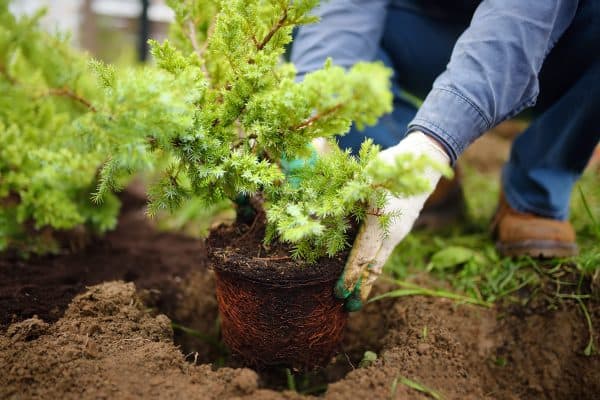Want to know what ground cover plants suit your rhododendrons? Don't worry! We researched these plants thoroughly to share with you some valuable information in regards to your query.
You should choose ground cover plants that like shade or filtered light to plant under rhododendrons. They should thrive in humus-rich, slightly acidic, well-draining, moist soil. Astilbe, Lamprocapnos Spectabilis, Grape Holly, Primrose, Sweet Woodruff, and Periwinkle are a few wonderful options.
Continue reading as we discuss each option of ground cover for rhododendrons. We'll also share with you the characteristics and the ways of planting rhododendrons.
What Kind Of Plant Are The Rhododendrons?
Rhododendrons are woody shrubs with clusters of vibrant flowers that prefer acidic soil. Rhododendrons prefer damp environments with cool and mild temperatures.
This popular flowering shrub thrives in wooded areas that provide dappled shade and protection from the sweltering afternoon sun. They are suitable for mass plantings, mixed borders, screening, foundation plantings, mixed borders, hedging, and containers.
Following are the basic characteristics of rhododendrons:
Height
Varies from the smallest variety, which is 18 inches tall to the largest species, which can grow up to a height of 100 feet, depending on the species and cultivar.
Climate
Rhododendrons thrive in the Pacific Northwest's damp, temperate climate. It can be difficult to grow them in colder regions, particularly in the Northeast.
Exposure
Plants thrive better in dappled or partial shade, particularly those with large leaves. Dwarf and small-leaved species thrive in cool, direct sunlight.
Soil
Rhododendrons prefer acidic soil (pH 3.5–7), though some modern varieties can tolerate soil with a pH as high as 7.5. If unsure, purchase a simple soil testing kit at your neighborhood garden center.
Check here to see this soil testing kit on Amazon.
Peak Bloom
Mid-spring is typically when peak bloom happens but some species don't bloom until July and some do so as early as March.
What Ground Cover For Shade Under Rhododendrons?
Finding ground cover plants that work well as rhododendron companions depends on their compatibility with light and pH. Rhododendrons do well on acidic soils. Look for plants that can withstand a pH between 4.5 and 6 when selecting rhododendron ground cover.
Additionally, rhododendrons favor midday shade or filtered light. They frequently thrive in the shadow of pine trees or beneath the canopy of oak trees. These trees are the perfect partners for rhododendrons because they also prefer acidic soil.
Below are some of the plants that can be a ground cover under rhododendrons:
Astilbes (Astilbe spp.)
Astilbes prefer moist, shady environments. Because of this, you should plant them where there is little light, like underneath your rhododendron tree.
Astilbes are cherished for their lovely flower plumes that are carried on tall stems. The fern-like foliage has year-round aesthetic appeal. There are many different types of this lovely plant. Flowers range in color from apricot to pink, salmon, and white.
Astilbe "amethyst" is a well-liked option because of its color resemblance to an amethyst stone. It tolerates deep shade well and is simple to grow.
Lamprocapnos Spectabilis (Dicentra spectabilis)
You must keep in mind that the soil will be wet and slightly acidic when selecting the ideal companion to plant beneath a rhododendron tree. Planting lamprocapnos spectabilis or commonly called bleeding heart under your rhododendron is a wise choice because it does well in this kind of soil.
This plant is renowned for its lovely pink or white flowers and blue-green, feathery foliage. The flowers add a splash of color to your garden and bloom from late spring to late summer.
Bleeding hearts enjoy moist, shady environments. It will have all the sun protection it requires from a thick rhododendron tree. Hummingbirds and butterflies are attracted to bleeding hearts, which are also resistant to rabbits and deer.
Grape Holly (Mahonia aquifolium)
Think "shade garden" when choosing plants to grow beneath your rhododendron tree. Grape holly is a fantastic option. It provides interest throughout the year, which makes it even more alluring. It blooms with golden-yellow flowers in the spring, luring butterflies and bees.
The leaves are bronze-red when they first appear and turn dark glossy green in the summer. The flowers transform into lovely purple-blue berries that draw birds in the fall. The berries can be used to make jams or jellies if you like to cook!
Grape holly grows best in rich, moist, well-draining soil that is slightly acidic and requires little maintenance. Check your soil's PH. A value between 4.5 and 6.5 is ideal. There are no significant pest or disease problems with grape holly.
This plant struggles in direct sunlight. It is therefore the perfect companion to grow where the light is filtered, such as beneath a rhododendron tree.
Primrose (Primula polyantha)
Early spring through the summer is when primrose flowers bloom. There is a wide range of colors available for them, including cream, orange, pink, red, white, and yellow with a wonderful fragrance that will permeate your garden.
Shade is not a problem for hardy primrose. Therefore, planting it where the soil will be moist and shaded, such as around the trunk of your small rhododendron tree, is a wise choice.
In general, primrose plants prefer moist and well-draining soil. If you take pleasure in taking care of your garden, you can add some organic fertilizer. Mulch will also aid in retaining moisture after planting.
After flowering, prune your primrose to promote a stronger, more vigorous growth the following year. The seeds can also be gathered and kept for the winter for planting in the spring.
Sweet Woodruff (Galium odoratum)
A ground cover that likes shade and won't get too tall is necessary if your rhododendron is developing into a low bush. A rhododendron bush is a great place for sweet woodruff to grow. It prefers shade and does well in moist to medium soil.
This lovely plant forms a mat and blooms in the late spring and summer with lovely white flowers. The vegetation creates a thick, emerald green carpet.
The wonderful scent of sweet woodruff grows stronger as the foliage dries. It tolerates a wide range of soil conditions and thrives in the slightly acidic soil beneath your rhododendron bush. It grows quickly and might occasionally need to be pruned back to maintain its shape.
Periwinkle (Vinca)
Periwinkles are another wonderful option for enhancing the beauty of the area beneath a low rhododendron bush. It is lovely to choose a companion plant that matches the color of your rhododendron bush if it has purple flowers.
The Big periwinkle, also known as Vinca major, features showy blue-violet flowers among its glossy, evergreen leaves. A good partner!
Mid-spring is when blooming begins, and it lasts through the summer and into the fall. The stems grow in the shape of long trails that will cover the ground beneath your rhododendron bush with a lovely carpet of color.
Vinca thrives in partial shade, and your rhododendron will give it the needed sun protection. The ideal soil should have a medium moisture content and good drainage. The same kind of soil that your rhododendron prefers will support its hardiness and growth.
Why Ground Cover?
Groundcovers are a crucial component of your landscape design. They may quickly cover a vast area, save time and effort when weeding, and serve as living mulch. There are ground covers that can grow where turf cannot, such as under dense shade or on steep slopes.
The long-term repercussions of maintaining a big grass area, with the resulting usage of fertilizers and pesticides, worry many gardeners today. For small areas, some of the groundcovers offered by your neighborhood nursery can be used instead of a lawn.
How To Plant Rhododendrons?
Rhododendrons should be planted in the early spring in cold climates. The alternate option is autumn. The best time to plant in warmer climates is in the fall, right before the rainy season.
In planting rhododendrons, you make a shallow, wide hole first. The depth should be just right for the root ball's top to be at the same level as it was in its container mix when you insert it into the hole. Never plant a rhododendron deeply or cover the crown with soil.
Then, make the root ball's sides slightly rougher so that roots can hang freely from it. Avoid compacting the soil too hard when burying the root ball.
Next, apply 3 inches of mulch and deeply water the area. Leave some space open and avoid packing the mulch too tightly against the rhododendron's stems and crown.
Lastly, rhododendrons should be watered regularly, especially during dry spells. Deeply water the soil, but wait until it is almost completely dry before watering it again.
Make sure to water newly planted rhododendrons throughout the fall, up until the ground freezes, especially those that were planted in the spring or fall.
Final Thoughts
You can grow rhododendrons as bushes, small trees, or even big trees. They perform best in shady areas. This will allow the soil beneath your rhododendron to be rich, moist, damp, and slightly acidic.
These factors will give you an idea of what good ground cover should be planted under your rhododendrons. It should suit the factors needed by the rhododendrons so that both will flourish together.

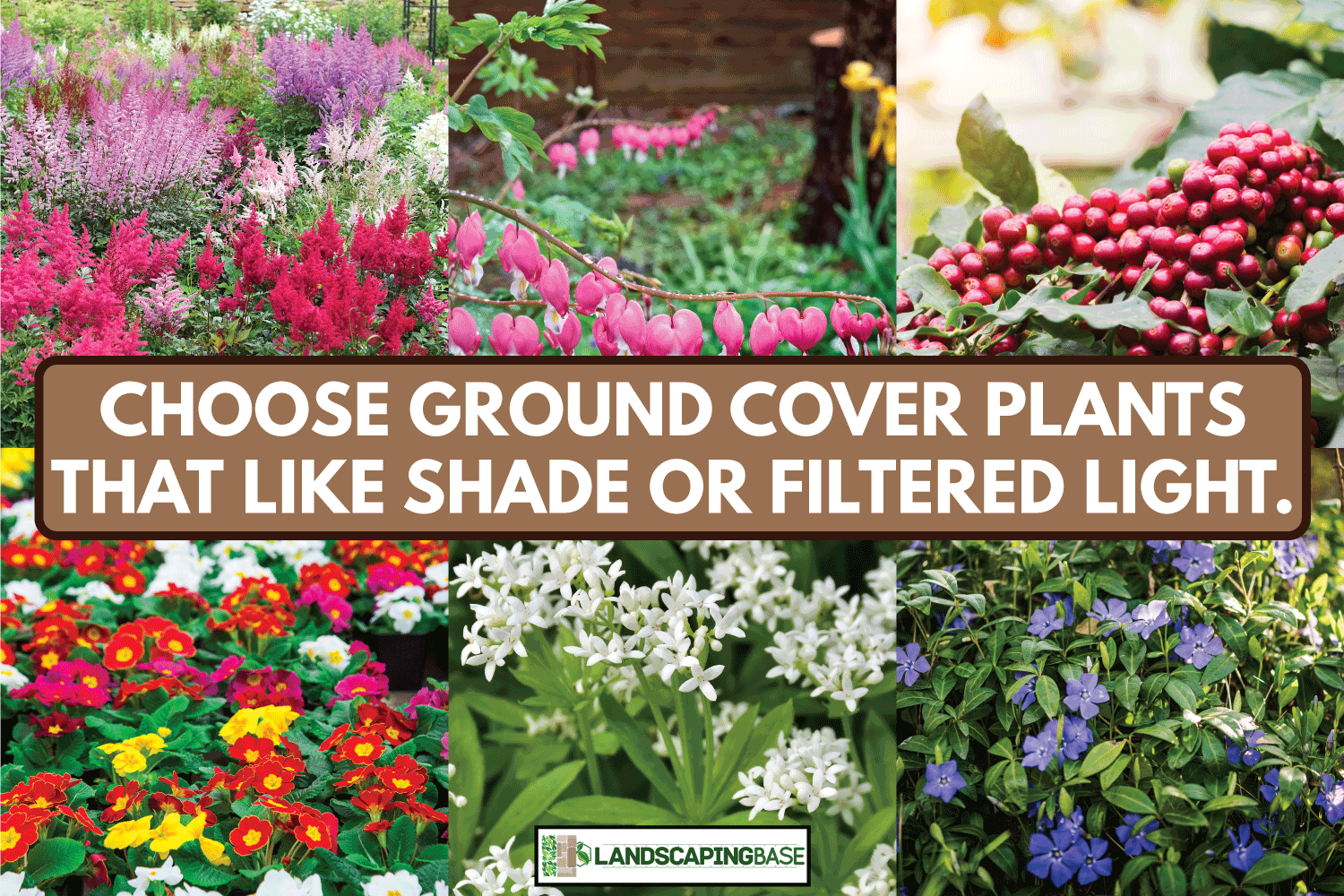
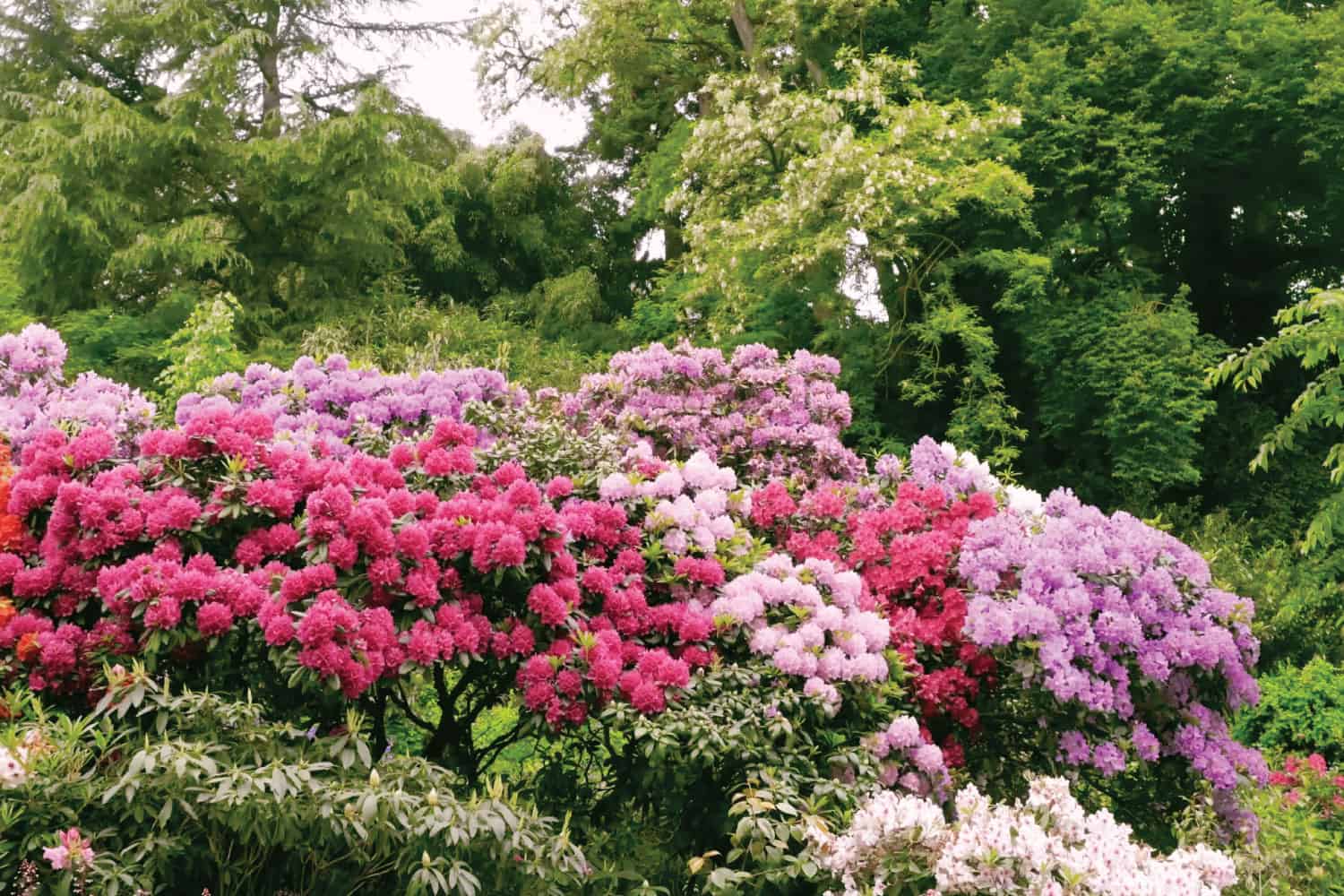

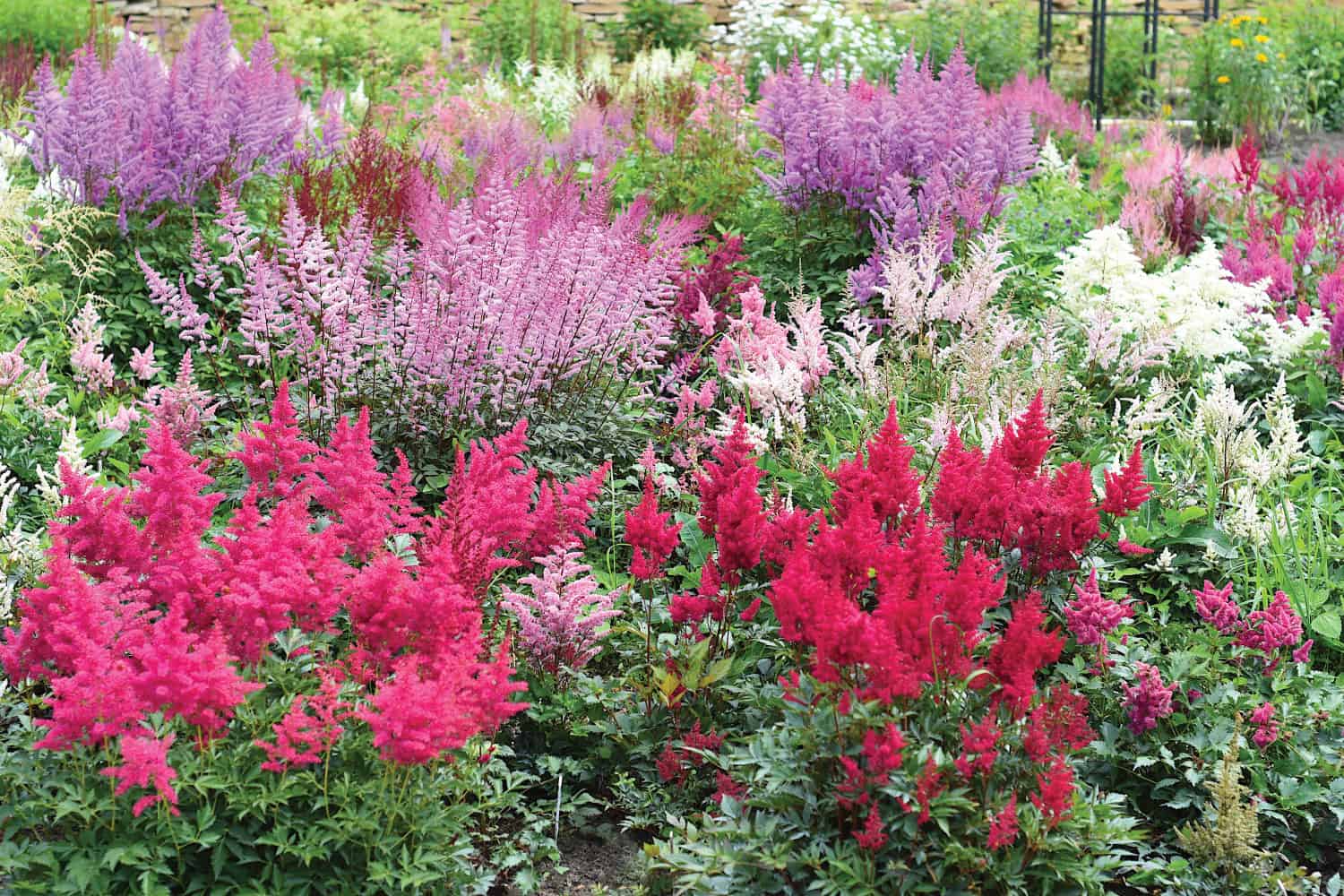
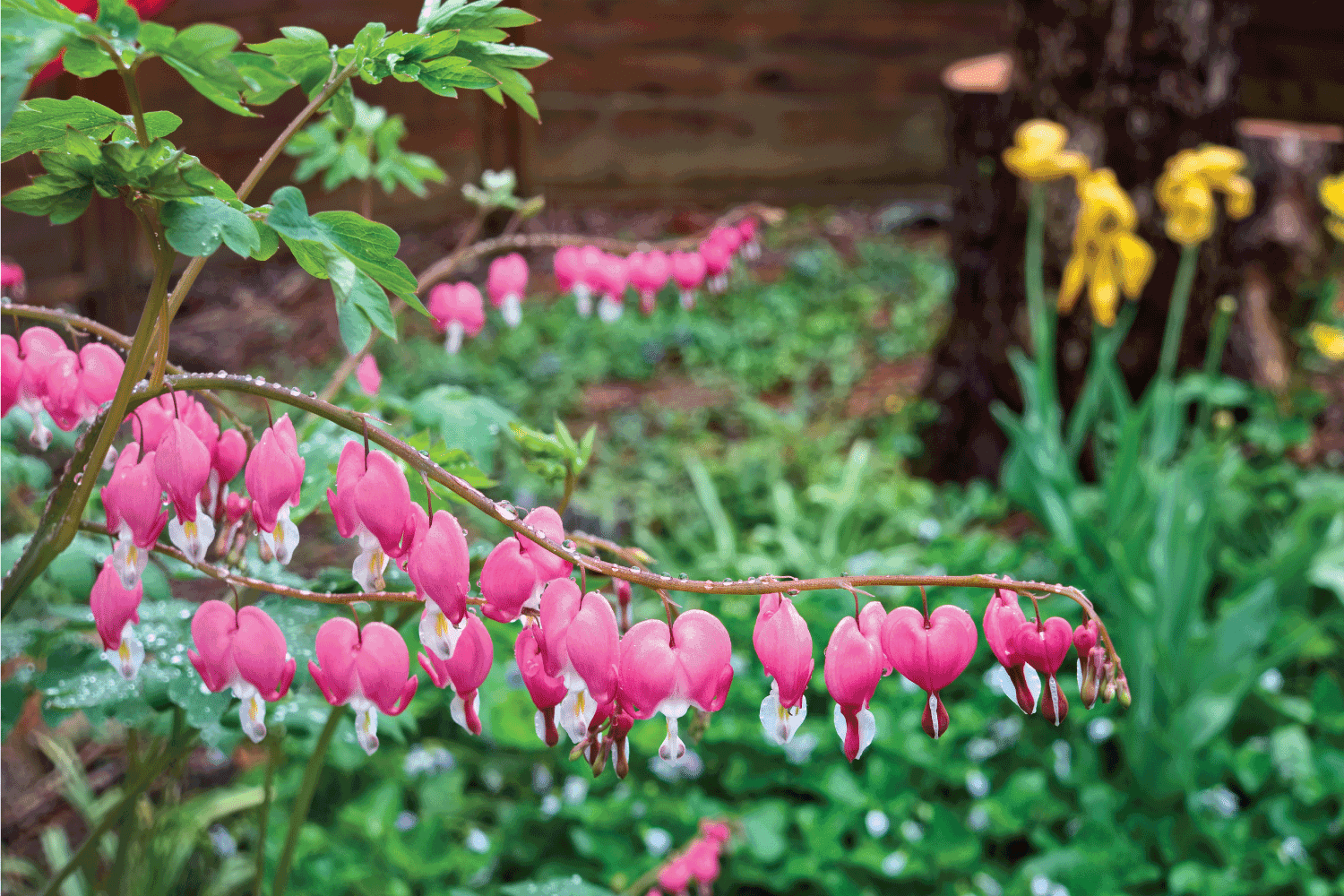


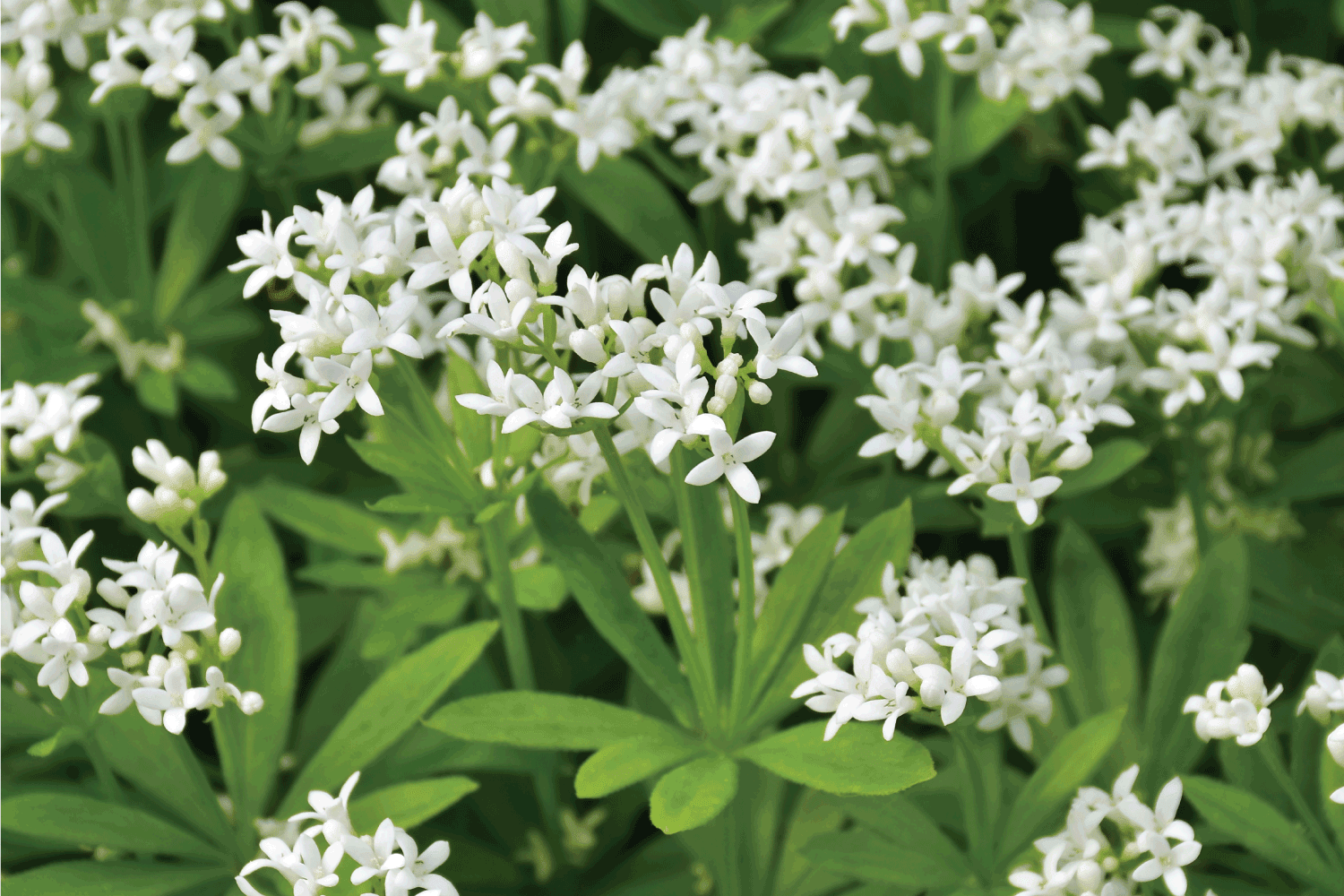
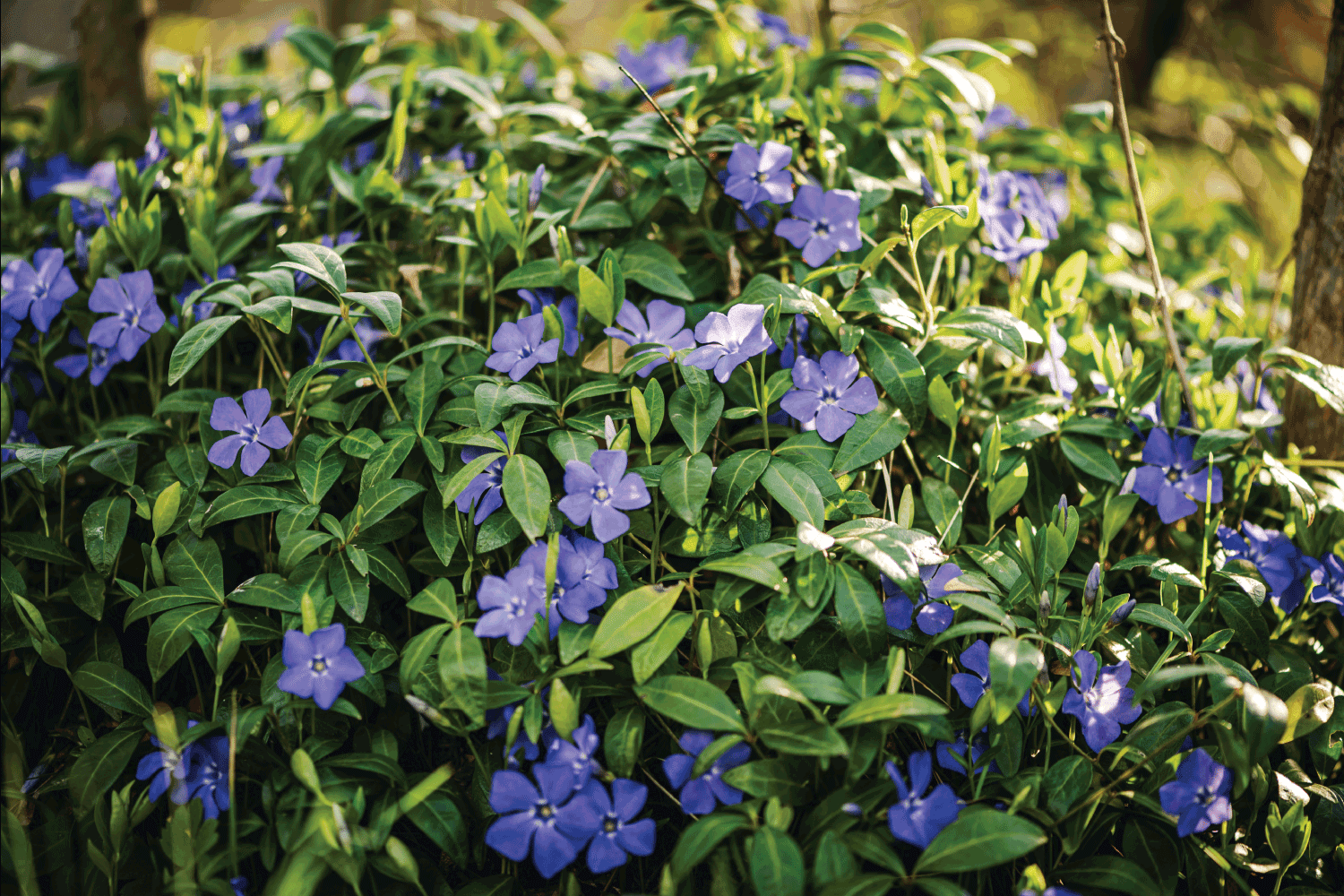
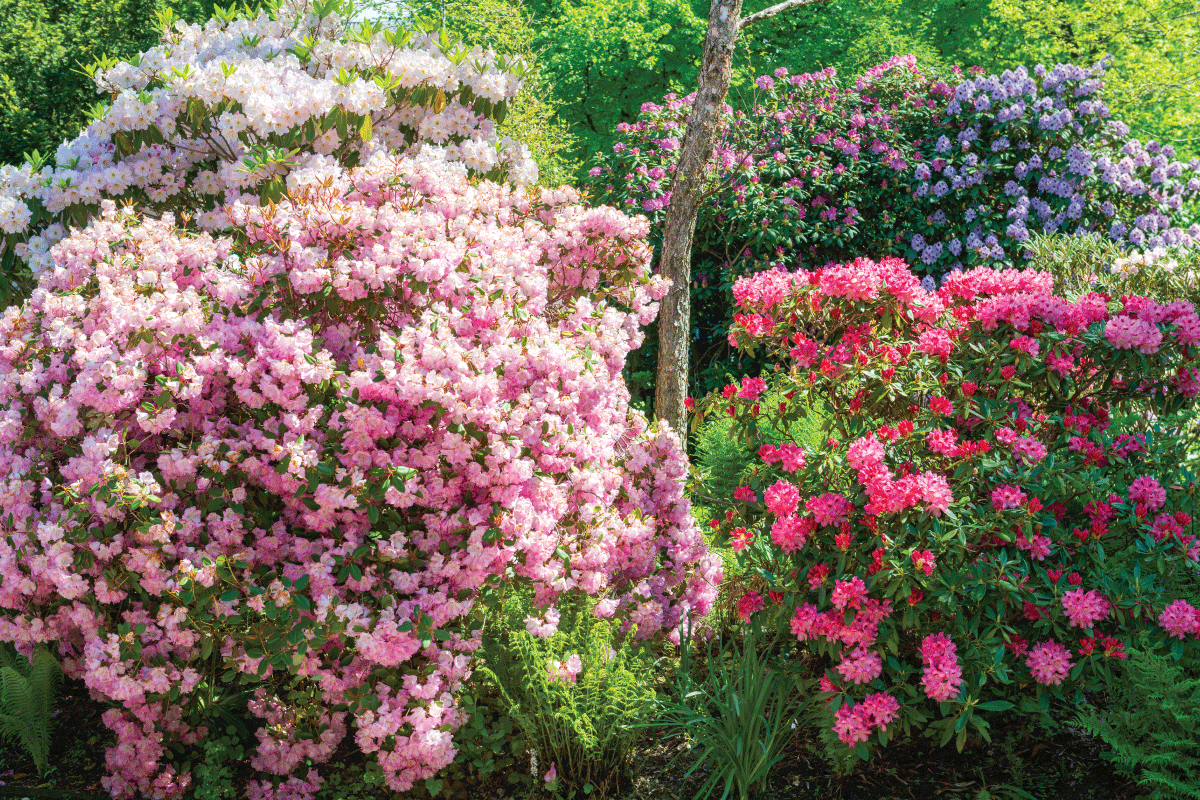
![man replanting herb with yellow flowers for use in landscaping. 15 Perennials That Absorb Water [Incredible Choices For Foundation Landscaping]](https://landscapingbase.com/wp-content/uploads/2022/09/man-replanting-herb-with-yellow-flowers.-15-Perennials-That-Absorb-Water-600x400.png)
![Big custom made luxury house with nicely trimmed and landscaped front yard, South Facing Front Yard Landscaping Ideas [17 Ideas To Increase Your Curb Appeal]](https://landscapingbase.com/wp-content/uploads/2022/09/BIGCUS1-600x400.jpg)
